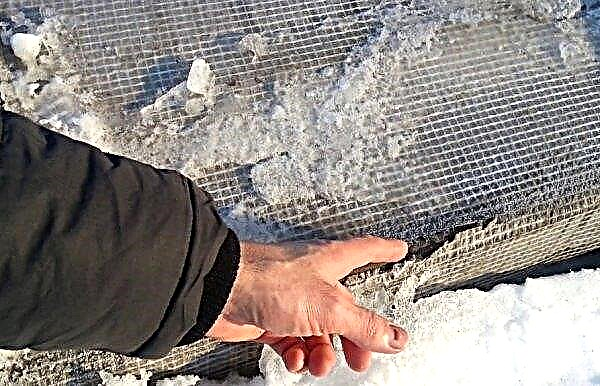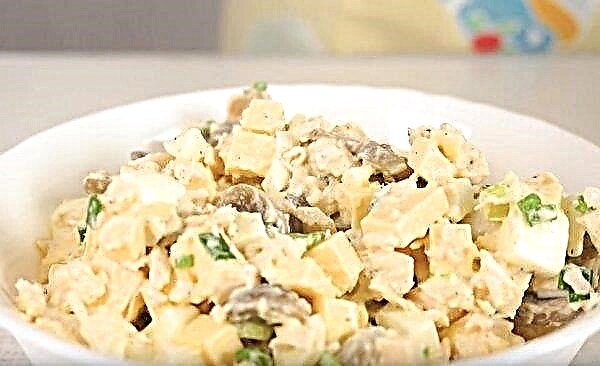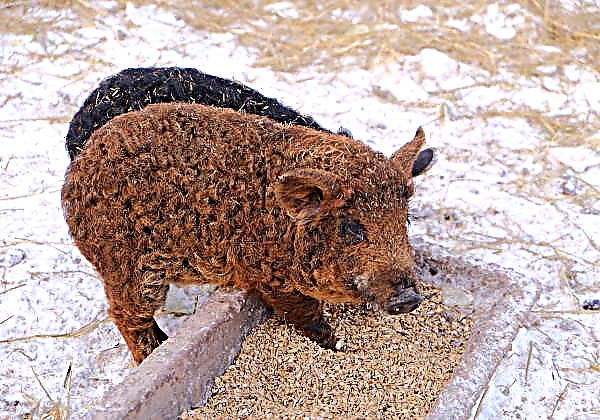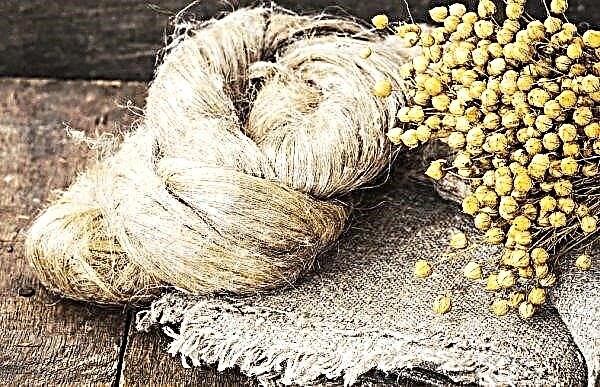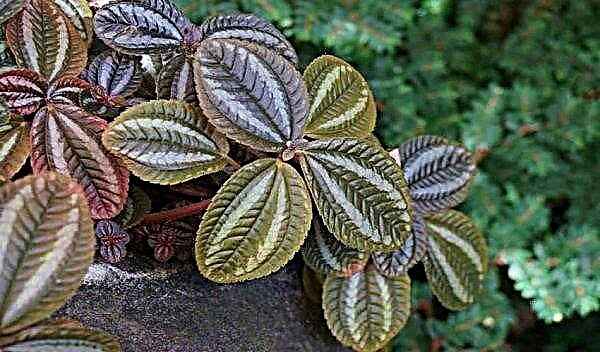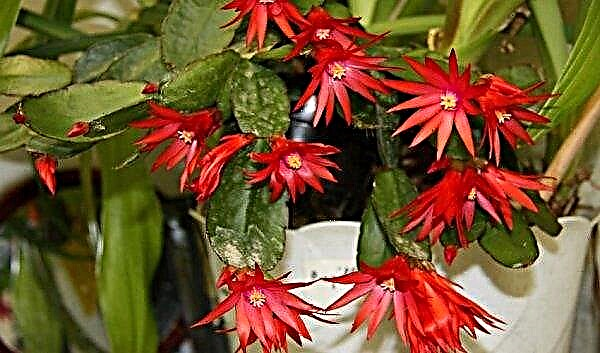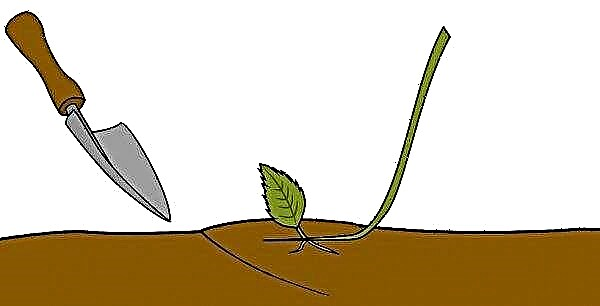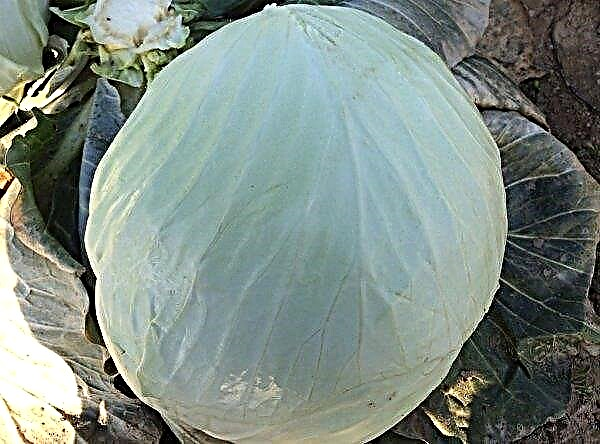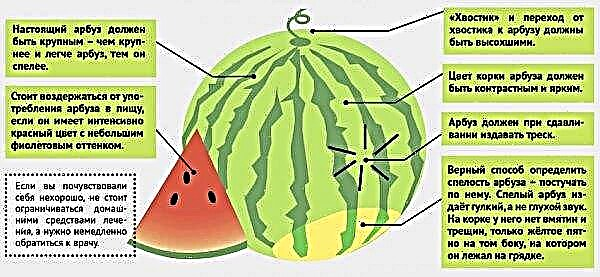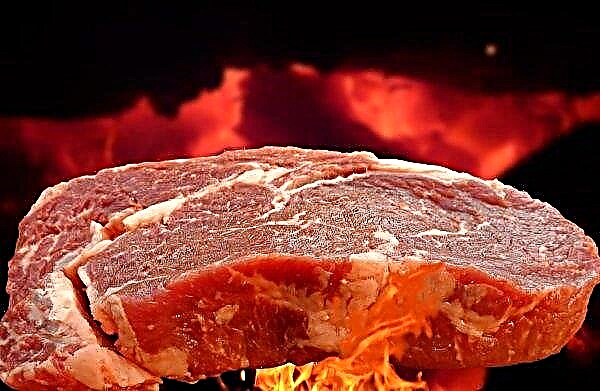Banks Pine is known to gardeners under various names - Black Jack, Canadian Horn, Labrador, Northern undersized and dapper. This tree is well suited for cultivation in regions with a temperate climate, is characterized by unpretentious care and attractive appearance. The botanical description and the most popular varieties of Banks pine, especially planting, propagating and growing crops, as well as recommendations for its use in landscape design, are further described in the article.
Tree description
This species of conifer was named after the scientist and breeder Joseph Banks, who studied botany in the 18th – 19th centuries. The Latin name of the plant is Pinus banksiana.
Did you know? In ancient Egypt, pine resin was used to embalm the bodies of the pharaohs. The resulting substance has retained its bacteriological properties to our time.
Botanical description of the species:
- The height of an adult tree is about 20–25 m. The annual growth is 30 cm, but after reaching the age of 30 years, the growth rate of the crop decreases markedly.
- The root system is very strong, goes deep into the soil.
- The diameter of the trunk usually does not exceed 60 cm, but there are specimens with an indicator of up to 150 cm.
- The trunk and branches are covered with a reddish-crimson bark. On its surface there are small thin plates that look like flakes.
- The crown is round, consists of many branched and flexible shoots, and its diameter can reach 6-10 m.
- The kidneys are elongated, have an ovoid shape and brownish-brown color. They shine in the sun and are coated with a lot of tar.
- The branches are densely covered with needles arranged in bundles of 2 pcs., And each of them has a twisted shape and reaches a length of 2-4 cm.
- The needles change color as they grow. Young needles are yellow, but gradually acquire a dark green color.
- Seeds are 2.5-4.5 mm long and 2.5 mm wide. Their edges are dull, and the surface is painted in a dark brown color.
- Life expectancy is about 150 years, but the age of individual representatives of this species can be up to 300 years.
Properties of pine cones
The main feature of Banks pine, due to which the tree can be distinguished from all other types of coniferous crops, is cones.
Important! For the preparation of medicines according to the recipes of traditional medicine, mainly young, immature pine cones collected in the spring are used.
The fruits have an unusual appearance and such characteristics:
- oval shape, curved, with a pointed tip (visually resembles a claw);
- length does not exceed 4.5 cm;
- located on a tree in groups of 2-3 pieces;
- in their immature form they have a shiny surface, and as they mature, they become dull gray;
- mature specimens after loss of seeds close and remain on the branches, growing with time in the wood.

- Pine cones have a valuable chemical composition and contain vitamins, carotene, and essential oils. Therefore, alternative medicines prepared from them have a number of properties useful to the human body:
- increase immunity;
- eliminate diseases of the upper respiratory tract;
- normalize the work of the gastrointestinal tract;
- help cure colds and flu;
- increase hemoglobin in the blood;
- prevent the occurrence of stroke.
Growing regions
Under natural conditions, the Canadian horn pine can be found in the north-eastern part of North America in the United States and Canada. Outside this continent, the tree has been cultivated in many countries of Europe since 1785. Pine Banks is undemanding in soil composition and lighting, able to withstand gusts of wind and tolerates dry air well.
Some varieties
There are several of the most famous varieties of Banks pine, differing from each other in external characteristics. Thanks to this, every gardener can choose a tree that is optimally suited for a particular site.
The most popular varieties of culture:
- Arktis. The maximum height of the tree is 2.5 m, and its crown has an irregular shape and is formed by several trunks diverging in different directions. The central conductor is not always pronounced and is usually curved. The needles have a gray tint.

- Banska Stiavnica. It belongs to slow-growing varieties, annually adding no more than 7.5 cm in growth. The pine crown is quite dense, has the shape of a wide cone. By the age of 10 years, the height of the tree is 1.5 m, and the width is up to 1 m. Short needles are painted in light green color and slightly twisted.

- Chippewa. The variety belongs to dwarfish, and the annual growth is not more than 2 cm. The tree has a round and dense crown of irregular, slightly flattened shape. The needles are small, painted in light green.
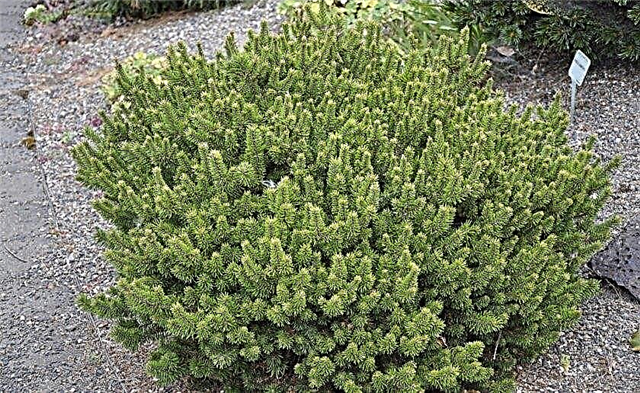
- Ancle Fogy. In addition to the miniature size, representatives of this variety are characterized by a curved trunk and a weeping branched crown. The shoots of the tree hang down to the ground, and the annual growth in height does not exceed 15 cm. By the age of 10 years, the height of the tree is 2 m. The needles are painted green.
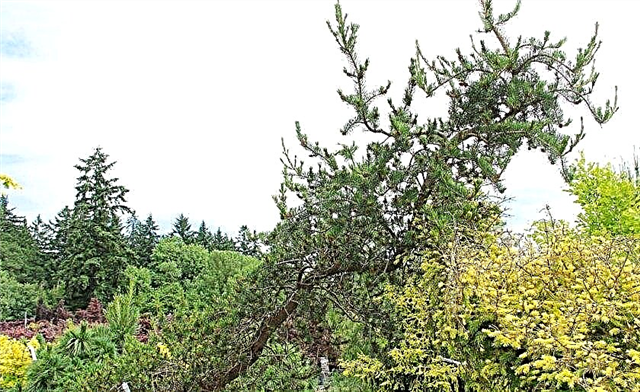
Landing
Banks pine can be propagated by seed. Planting material can be collected independently from ripened cones in October or purchased at a specialized store. Sowing is performed in mid-April.
Did you know? On the territory of Southeast Asia one can meet one of the most unusual species of coniferous crops - Bunge pine. Her bark is painted white.
A step-by-step instruction for propagating conifers by seeds is presented below:
- Spread the collected seeds in a thin layer on a paper towel. Dry them at room temperature for a day.
- Wrap planting material in cotton cloth, put in the refrigerator for 1-2 months.
- Soak the seeds in warm water a week before planting, so that they sprout faster after planting. Immediately before embedding in the soil, disinfect them in a strong solution of potassium permanganate for half an hour.
- Prepare a wide container or small individual containers. Fill them with river sand, previously calcined in the oven at a temperature of + 200 ° C for 20 minutes. To the upper edge of the containers should remain at least 7-10 cm.
- Put a layer of wood sawdust about 2 cm thick on sand. Deepen planting material 2 cm into it. The distance between adjacent seeds is also left 2 cm.
- Put a layer of needles up to 1.5 cm thick on the sawdust. Spray the crops with warm water, cover with a film. Remove containers to a warm place.
- Shoots appear 1–1.5 months after planting. During this time, the film must sometimes be lifted for ventilation, moistening the substrate in the container as it dries.
- After seed germination, remove the film. Remove seedlings in a well-lit and warm place, providing them with watering as necessary.

When 2 pairs of needles appear on the sprouts, they are transplanted into larger individual pots filled with special soil for coniferous crops (you can buy it in a store). In these containers, seedlings are grown for 2-3 years, and then transplanted into open ground.
Important! Planting young trees in a permanent place is recommended in March. Landing pits are prepared in November, so that the soil has settled in them.
Step-by-step landing instructions:
- Dig holes 1 × 1 m in size. When planting several seedlings, the distance between them should be at least 4 m.
- Lay a layer of expanded clay or pebble on the bottom of the pit. The thickness of the drainage should be at least 20 cm. Leave the pit in this form until landing.
- Mix the earth obtained by digging a depression with sand and peat in a ratio of 1: 2: 1. Add superphosphate to the obtained substrate (150 g for each seedling).
- Pour some nutrient soil into the pit over the drainage layer.
- Lower the lower part of the seedling together with the earthen lump into the recess so that the root neck of the tree is slightly higher than the soil surface.
- Sprinkle the roots with the remnants of a fertile substrate. Tamp the ground around the trunk with your hands.
- Water the tree with warm water so that the soil around it is well wet. When the liquid is absorbed, mulch the trunk circle with dry chips and pine bark.

Care Rules
After the seedling is rooted in a permanent place, further care of the crop is minimized. Young pines need to be provided with sufficient moisture, and growing specimens are periodically fed with nutrients.
In order for the roots of the tree to develop normally, you need to follow several recommendations for caring for the soil around the trunk. Before the onset of cold weather, measures are taken to prepare the Banks pine for winter, and in the spring they trim the crown.
Watering
Adult specimens can tolerate drought, but young seedlings will not be able to grow and develop normally without enough water in the soil.

Therefore, when watering conifers, adhere to such rules:
- in the first 2 years after planting, pine is irrigated 2-3 times a month, and during drought even more often (the soil should not completely dry out);
- 10–20 L of warm water is consumed per young seedling;
- in early spring, abundant watering of the tree is performed to accelerate its exit from the winter state of rest;
- Before the onset of cold weather, water-charging irrigation is carried out, so that the roots are saturated with moisture and do not freeze.
Important! Adult specimens are watered only during very severe droughts, and in other cases additional irrigation is not required.
Top dressing
Thanks to a well-developed root system, adult representatives of this species independently extract all the necessary substances from the coniferous litter, which gradually forms around the trunk.

But the soil around young trees must be fertilized, adhering to such recommendations:
- top dressing is carried out only in the first 2 years after planting;
- in early spring, mineral fertilizers for coniferous crops purchased at the store are closed up in the area of the near-stem circle, following the instructions on the package;
- in the second half of summer, pines are watered with a solution of phosphorus-potassium fertilizers - 40-50 g of a substance diluted in 10 l of water will be needed per tree.
Mulching and loosening the soil
To prevent the rapid evaporation of moisture from the soil and reduce the number of weeds, it is recommended to cover the area of the trunk circle of the Banks pine with a layer of mulch. Before this, surface loosening of the soil is carried out, which helps to improve the access of oxygen to the roots and prevents stagnation of water around the tree.
As mulch, you can use the following materials:
- dry bark of conifers;
- medium sized gravel;
- sawdust;
- fallen needles.
Haircut and trim
Banks Pine has a neat crown of the correct shape, so in most cases the forming tree pruning is not needed. But if the gardener wants to give the plant a look of some kind of geometric shape, then you can shorten part of the shoots.

Trimming is performed according to the following rules:
- the procedure is carried out in early spring;
- without fail cut off broken, dry, bare and frozen branches;
- to give the crown the desired shape, the shoots can be shortened by no more than 1⁄3 of the length;
- to stimulate the growth of lateral branches, cut off 1⁄3 of the growth of the current year.
Important! The first pruning of Banks pine is allowed only the next year after planting a tree.
Winter preparations
Banks pine is well adapted to the conditions of a cold winter, therefore it can withstand frosts, but its sprawling branches often break under the weight of a large snow cover.
In order for the tree to tolerate the cold season, it must be prepared using the following actions:
- gently pull the side branches around the trunk with a rope;
- to cover young specimens with non-woven material before the onset of cold weather - this will protect the wood from freezing;
- mulch the region of the near-trunk circle and cover it from above with branches of the spruce branches;
- tie the trunk with a roofing material or a piece of metal mesh to protect the bark from damage by mice and rodents.

Winter shelter can be removed only in spring, after sunny weather. You can not wrap a pine tree with plastic wrap - this can lead to rotting shoots and the development of fungal diseases.
Diseases and Pests
Banks pine is rarely attacked by infections and harmful insects if the gardener follows all the recommendations for planting and caring for a tree. But if there are errors, problems may arise, the symptoms of which need to be able to recognize and immediately begin appropriate treatment.
Did you know? Swamp pine has the largest needles. The length of the needles in representatives of this species is up to 45 cm.
The main diseases and pests of conifers:
- Rust. The fungus is the causative agent, and the main symptom of the infection is the orange bubbles on the needles containing spores. The infected specimen turns yellow and dries. For treatment use drugs that contain copper ("Abiga-peak", "Hom").
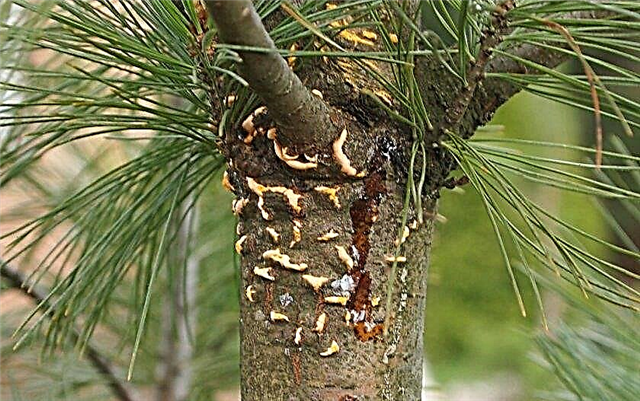
- Fusarium. This infection affects the needles and shoots, staining the pine needles in yellow-red. The crown of the tree gradually thins as a result of shedding green mass, the branches dry out and the tree can die. It is impossible to cure this disease, so the diseased instance must be destroyed.
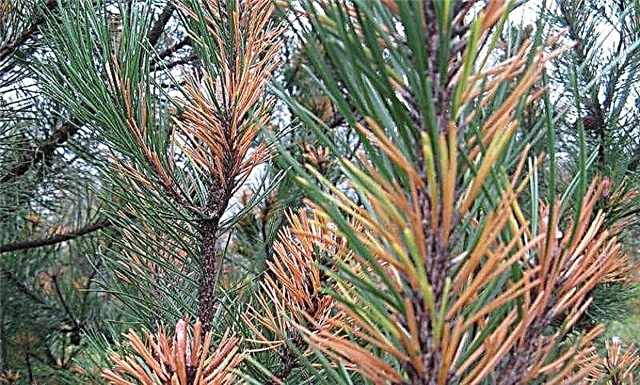
- Hermes. The insect is small in size and eats the juice of pine needles. In this case, a white fluffy coating appears on fading needles, the shoots begin to deform and fade. For treatment, insecticides are used (for example, "Karbofos", "Actellic").
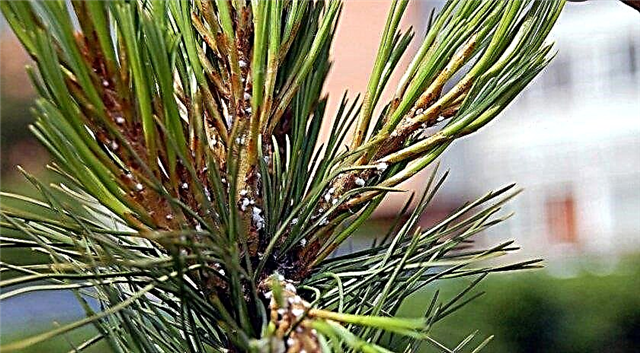
- Shield. The pest sucks the juice from the shoots and lives on the bottom of the tree needles. On the affected specimen, the needles turn yellow and fall, and the branches dry. Young seedlings can even die. If the infection is insignificant, the scabs are cleaned with a brush from the pine, and if there are a lot of insects, then special preparations are used (for example, Akarin).
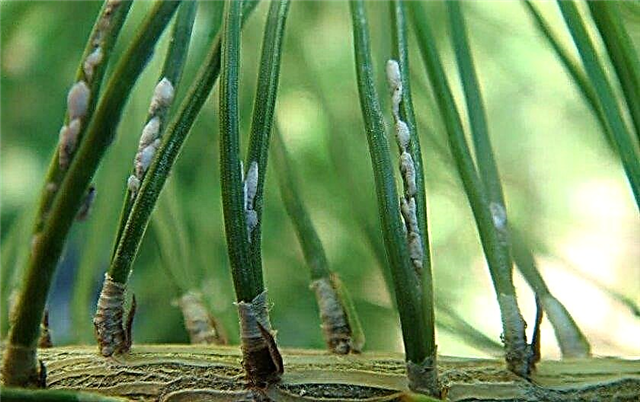
- Silkworm. Caterpillars of this pest, which eat needles, cause the greatest harm to the pine. At the same time, a thin web appears on the needles, and the branches become bare and dry. Insecticides are used against larvae (for example, “Lepidocide”).
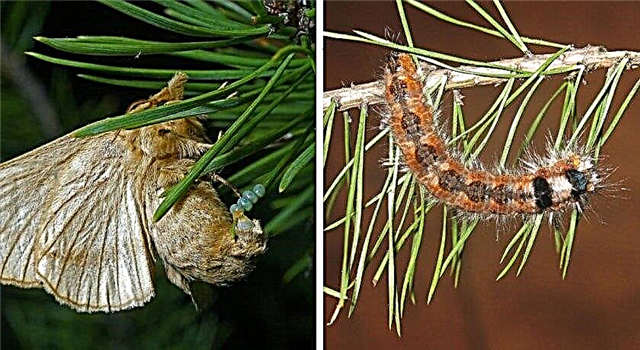
The main preventive measures that help prevent the emergence of diseases and pests are:
- compliance with the irrigation regime;
- choosing the right place for planting conifers;
- the use of high-quality planting material;
- surface loosening of the region of the trunk circle;
- periodic destruction of weeds around the trunk;
- annual sanitary pruning.
Landscape design application
The attractive appearance of the crown, decorative bumps and unpretentiousness in the care allow the use of the Canadian horn pine in landscape design.

Depending on the variety, you can use the tree to decorate the site and garden in one of the following ways:
- create hedges;
- plant a crop as a tapeworm;
- use a tree to compose a composition of other coniferous and deciduous plants, shrubs;
- decorate alpine slides and decorative ponds;
- plant dwarf varieties in flowering flower beds.
Did you know? Lambert pines are the highest in the world. Mature trees grow up to 80 m, and you can meet them in North America.
With the help of Banks pine, you can decorate any area, and even a beginner gardener can cope with the cultivation of a tree.Using the information presented above, you can choose the most suitable variety for yourself, correctly plant the seedlings, provide them with the necessary care, and also prevent the appearance of diseases and pests.










